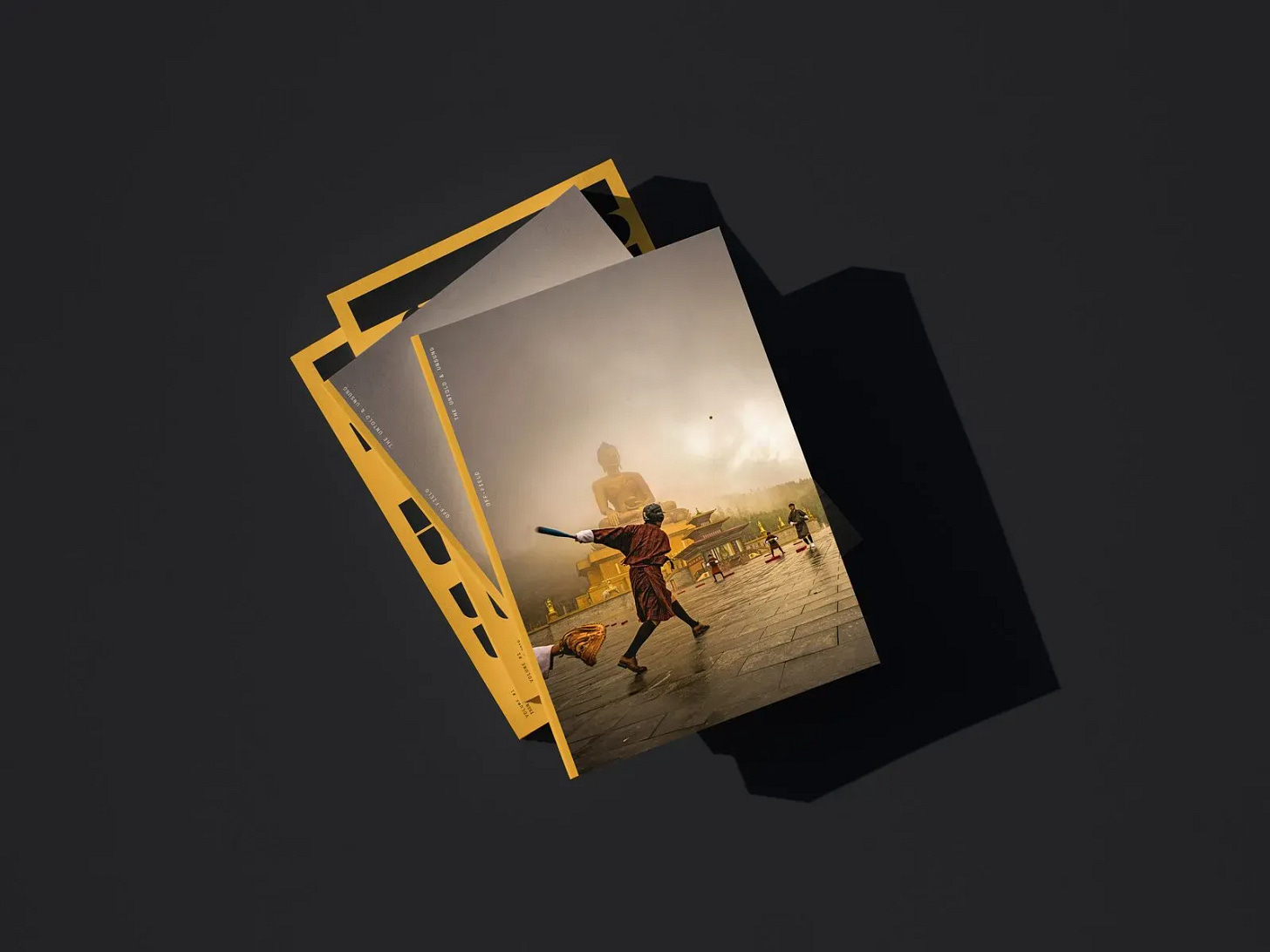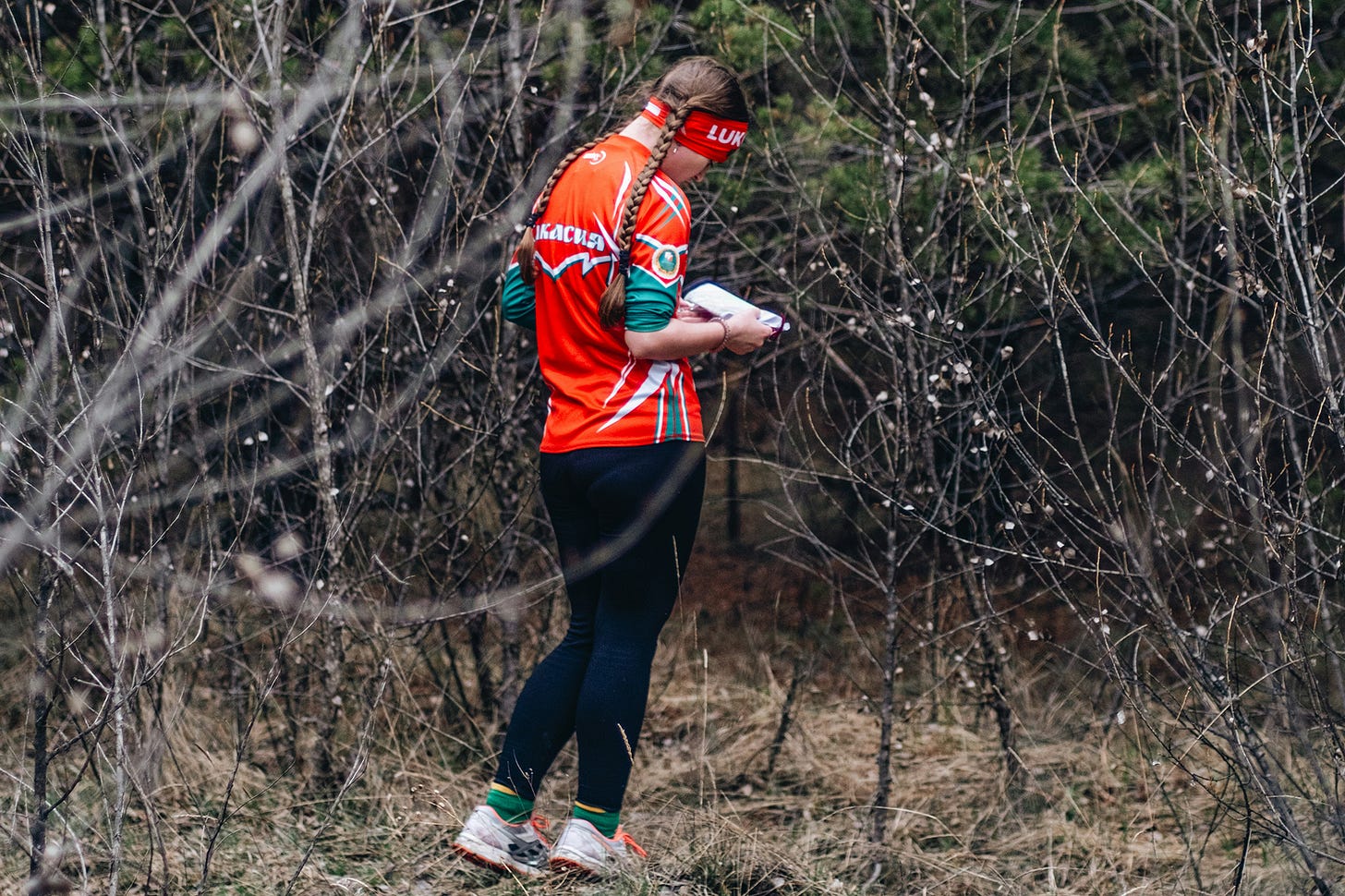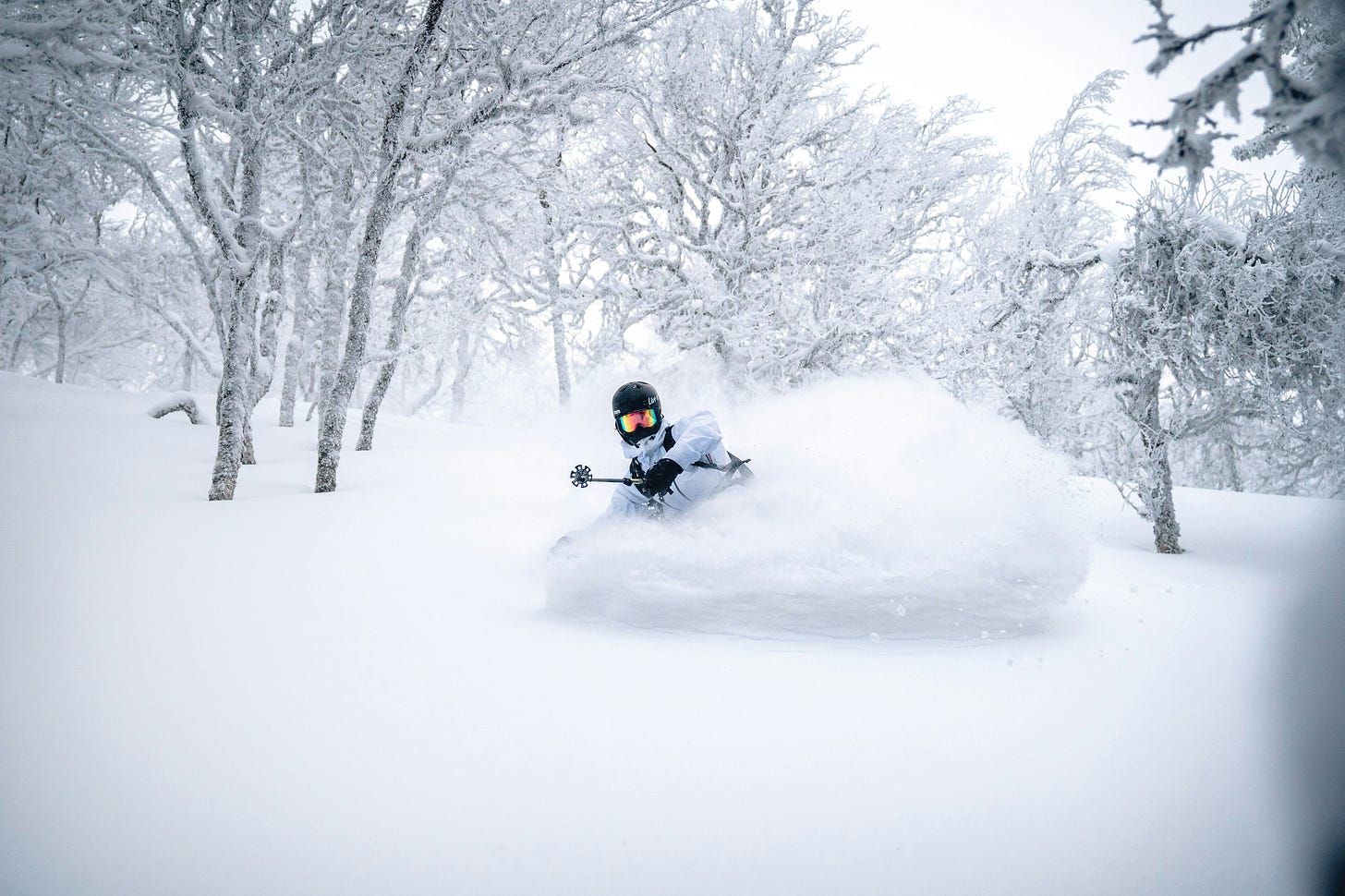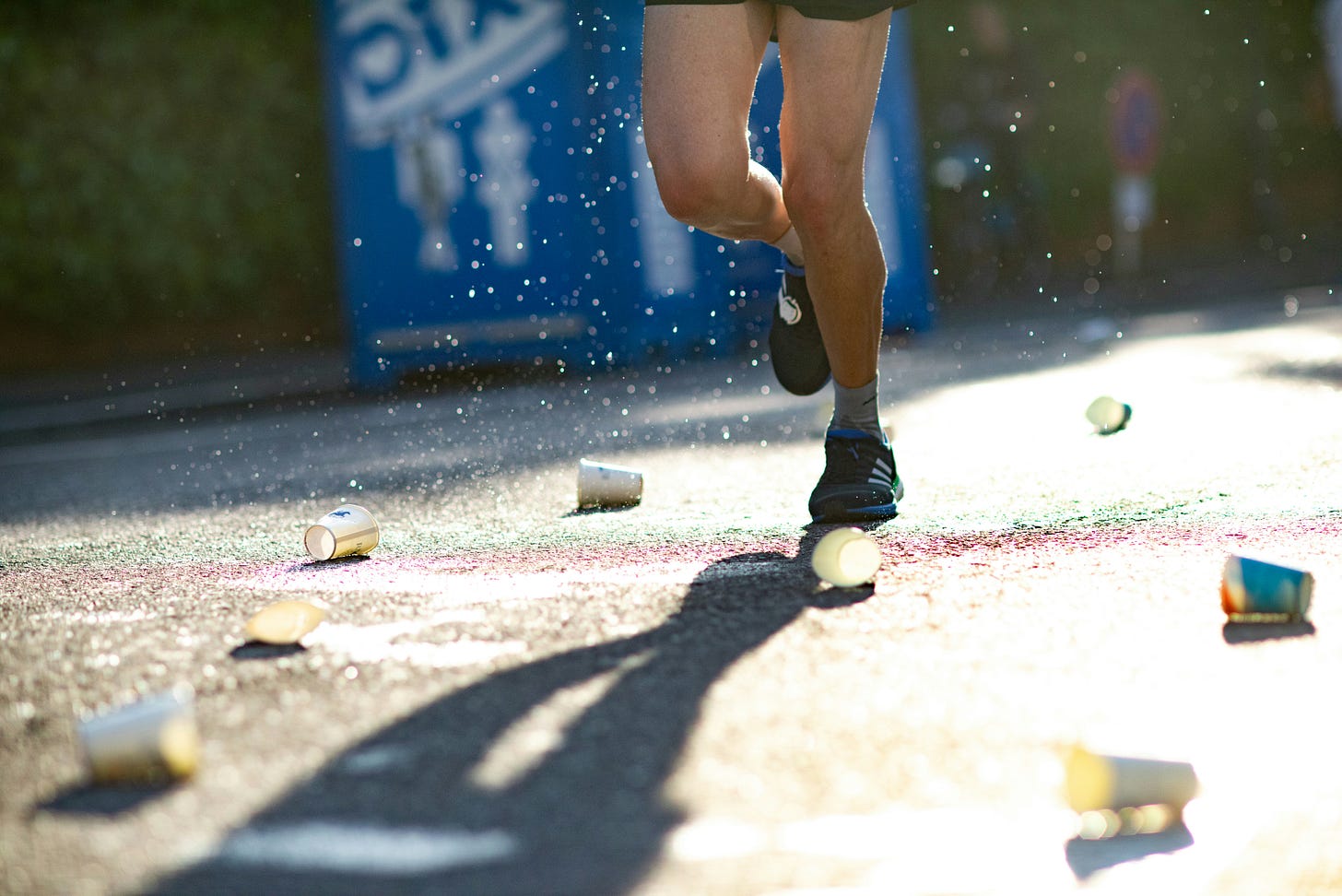A springtime smackdown from Mother Nature
#21: Two days of thorny hell, 30 hours in a hurricane, skiing's steepest drop, and Humanity 0 Mother Nature 40 at the Barkley Marathons...
Tales from the fringes of sport and society…
The wind is teasing as Lazarus Lake indicates the race has begun. Lake is a human by the way. One with a beard, steel-rimmed specs, and a red beanie. Although it’s apt that his name makes him sound like an imposing natural barrier.
An hour earlier, he blew on a conch to let the 40 ultra-runners converging at Frozen Head State Park in Morgan County, Tennessee, that they were to prepare themselves for the 2025 Barkley Marathons. Then the race began. Not by the wave of a flag or the firing of a gun. Lake simply lit his cigarette.
The man they call Laz has started this brutal slog with a tab in his mouth since its first edition back in 1986. He’d been inspired by the 1977 prison break by James Earl Ray. The man who shot Martin Luther King Jr had managed to escape nearby Brushy Mountain State Penitentiary. But when he was caught 54 hours later, it transpired that he'd only covered eight miles. Lake mocked this measly distance and reckoned he could do at least 100 miles in the same time. Naming the race after his longtime friend and running buddy Barry Barkley, a ruthless endurance event was born.
To call it an ultra-marathon barely scratches the surface. Indeed, with fiendish thorny briars lining the course, scratches are par for the course. Finishers must complete five loops of an unmarked route, navigating it twice clockwise, twice anti-clockwise, and a final lap that alternates based on the leading runner.
Each loop consists of around 20-25 miles of undulating and unforgiving overgrown terrain. Sections with names like the meatgrinder, rat jaw, prison tunnel, and testicle spectacle give some indications as to the horrors that await. Relentless diagonal climbing on all fours means that runners become accustomed to the sight of their blood. If they see an aid station, they’re hallucinating. To prove they've completed each loop, they'll tear pages (corresponding with their race number) from books scattered along the way.
Each drop-out is treated to a live bugle rendition of Taps, sombre tones that are usually heard at military funerals.
Even if they’re unflinching in the face of endless hills, hidden quagmires, leaf-camouflaged rocks, and stabbing shrubs, the task is as much mental as physical. Runners who worship at the altar of Strava will be aghast at the technology ban. No phones, no GPS, no digital record of hell.
Runners are given a map before the race. Make notes. Memorise it. The map will be confiscated before you begin. This isn’t the frolicking orienteering larks you remember from school. In 2006, one runner covered just two miles of the course before being found in a different county 32 hours later.
In 39 years, only 20 people have finished the Barkley Marathons. And yet, three completed the course in 2023, a record. Then last year, it was broken again. Britain's formidable Jasmin Paris became the first-ever female finisher, joining four others to touch the finishing gate in time.
Lazarus Lake must have been wondering if his fiendish course was finally being conquered by humans increasingly minded to push themselves beyond their limits. As he lit his cigarette and unleashed another 40 runners into the wild, he must have wondered just how many would finish the 2025 edition. Six? Seven? 10 or more?
Two days later, another cigarette burned from a smirking mouth. Nobody had finished.
Zero.
Nada.
Zilch.
Heavy storms in the run-up to the race had turned the canvas into mush. And persistent rain combined with 50mph winds meant that beleaguered runners could only offer brush strokes. Most of the field was eliminated by loop one.
John Kelly, one of last year's finishers, was the only runner to finish three loops of the course within the cut-off time. Lake describes completing three laps as the "fun run". Kelly didn't look like he'd had much fun out there, though he had enough gallows humour to play his own lament on the bugle.
Humanity 0 Mother Nature 40.
As Spring arrives, it was a little reminder of who’s the boss.
In this month’s Off-Field newsletter, we’ve picked out a few more recent sporting examples where nature is the athlete’s main adversary. Away from the sporting arena, and in honour of a fantastic recent trip to Cork, there’s also a tale about the man-made phenomenon that could give any of the planet’s fastest-growing greenery a run for its money: the Irish boozer. Enjoy the selection.

Off-Field in print: now available to pre-order!
Last weekend I made my live debut at the Morpeth Book Festival in Northumberland. Many thanks to those who came along to listen to me witter on and for fighting the urge to throw tomatoes. It was great to be part of the event, especially alongside some big-name authors who actually know what they’re doing.
The talk will soon be released as a live episode of the Unsung podcast, so if you didn’t make it along do give it a listen when it’s out.
Excitingly, guests at the book festival would have heard me give an exclusive preview of a new publication that we’ve been working on for some time.
Off-Field Volume #1 is our debut print anthology, featuring 250 pages of meticulous longform writing, striking photography, elite design, and premium print production. From the rugged cliffs of Bhutan to Sweden's icy Baltic shores, we present the unheard voices from the fringes of the sports you love, and the ones you didn't know existed.
We’re only printing a limited number but we’re very proud of it and we’re taking pre-orders now for release later this Spring. If you want to be among the first to have a copy land on your doorstep, head over to our swanky new website and place your order.
‘60 hours of hell’: hardship is the only way forward at the Barkley Marathons
The Guardian
“A month before the 2025 Barkley Marathons, Lazarus Lake is out on his daily eight-mile stroll along the rural roads near his Bell Buckle, Tennessee home. Pausing mid-step, he fixes his gaze on a vine creeping onto the asphalt – kudzu, the invasive scourge of the American South. Laz pins it with the toe of his worn-out shoe, then crushes it with a sharp twist. Pop. “Nature isn’t about balance,” he says, kicking the remains aside. “That’s a common misconception – it’s war.”

30 Hours in a hurricane, on a race with no course
NY Times
“The de-emphasizing of brute strength and increased emphasis on cooperation and problem-solving also make the sport much more gender-balanced than many outdoor competitions. Some 37 percent of the racers at nationals were women, and the first-, second-, third- and fifth-place teams would be coed; the fourth- and sixth-place teams would be all-female; the highest-placing all-male team was seventh.”

I survived downhill skiing’s rowdiest party
Outside Magazine
“Skiers have raced in Kitzbühel since 1895, and on the Streif since 1937. Most World Cup downhillers will tell you they’d rather win the Hahnenkamm than an Olympic gold medal. Much of its prestige is due to the course: the Streif drops 2,822 vertical feet in 2.05 miles, a run that racers complete in less than two minutes (top recorded speed: 95 mph). Whereas standard downhill courses build up to their most menacing sections, ‘On the Streif, you’ve got the devil at your heels right from the start,’ Austrian racer Harti Weirather, the 1982 Hahnenkamm winner and former World Cup overall champion, once said.”

At age 76, Jeannie Rice just keeps running fast. Now, scientists finally know why
Runner’s World
“Six days after she set a new age-group world record in the marathon, running a time of 3:33:27 (averaging 8:08 miles), Rice agreed to visit an exercise lab in England where she underwent body fat measuring, treadmill testing, and other running and jumping assessments. In the resulting case report, which was published last month in the Journal of Applied Physiology, the authors shared that Rice has the highest V02 max (47.8) ever recorded for a woman aged 75 years or older, and a surprisingly high max heart rate of 180.”
How the Irish pub became one of the Emerald Isle’s greatest exports
Smithsonian Magazine
“Founder Mel McNally is not in the business of just shipping pub-in-a-box packages around the world. Each one is custom-designed to fit a specific space in collaboration with the local owner, who has creative control over the many details involved. The company’s stock-in-trade is not the Irish pub as a commodity; it’s the Irish pub as a vibe. You can’t sell the history and lore and memories intrinsic in a community’s longstanding institution. But you can sell the craftsmanship inextricably linked to a nation’s cultural legacy.”
Do Not Block the Gate: The 2024 Barkley Marathons
David Miller
“The low hum of anxious mumbling is shattered by a cry – she’s coming! In the distance, the vibrant red top of Jasmin Paris emerges from the browns and greys of the forest with singular determination and only the yellow gate in her sights.”
Frozen Head State Park may have got its revenge this year, but in 2024 five hardy souls conquered the Barkley Marathons. And in Do Not Block the Gate, award-winning sports photographer David Miller takes us on a visual journey through the thorny undergrowth of Lazarus Lake's brutal course to witness the pain, the suffering, the tears and the triumphs of one of its most memorable editions.
Among the 200 images, all shot in monochrome using a Leica Q2 Monochrom, is the now iconic photo of Jasmin Paris slumped under the famous gate, having made the cut-off time by mere seconds.
Thanks for reading March’s edition of Off-Field. If you enjoyed it, use the buttons below to like the newsletter, post a comment, or share it with others.
You can get in touch at hello@off-field.net
Read previous editions of Off-Field at offfield.substack.com/archive
Subscribe free for future editions of Off-Field, or share it with a friend:
“Make no mistake: the weeds will win: nature bats last.” - Robert Pyle













